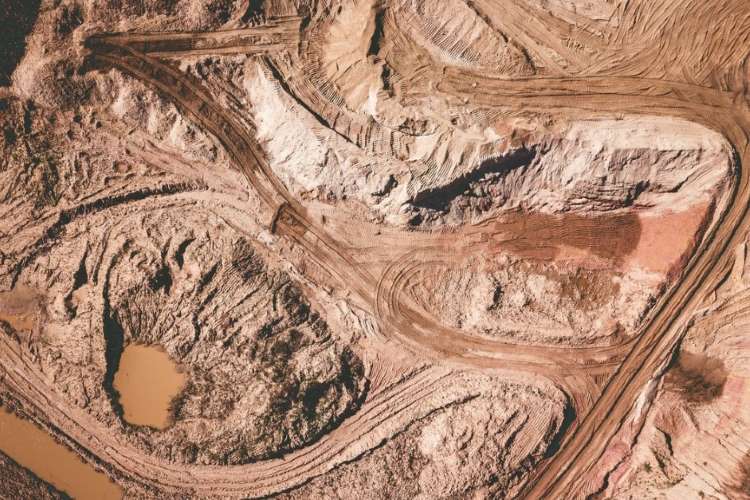
In India, the mining industry is regulated to ensure the safety of the workforce and machinery, transparency of business, environmental protection, and community development. The government has, on several occasions, reiterated its policy of ‘maximum governance and minimum government’. In 1999, the Union government decided to rename the Mines and Minerals (Regulation and Development) Act to The Mines and Minerals (Development and Regulation) Act to convey to mining companies that the government prioritises development over regulation.
Twenty years later, the National Mineral Policy 2019 talked about four critical points under the heading Regulation of Minerals (2.1 to 2.4). The focus was on ensuring coordination between the Union and state governments as well as on mining under an approved plan with technology intervention for ease of doing business.
- Responsibility of the states as well the Centre in management of resources.
- Transparent allocation of resources.
- Strengthening the Indian Bureau of Mines (IBM) and State Directorate for mining plan.
- Implementation of e-governance and measures to prevent illegal mining.
Recent reforms in mining that include permission to sell ore from captive mines are also in the direction of ending the differentiation between captive and non-captive mines. The reform measures provide an option to the lessee to sell ore in the market, and it is not mandatory. The move aims to project mining as a self-sufficient sector.
READ I Wheat export ban: Farmers suffer financial losses, and India a loss of face
The Mines and Mineral (Development and Regulation) Act was amended in 2020 and 2021 to create special provisions to enable the seamless transition of mining leases expiring on March 31, 2020. While new lessees were facilitated by ensuring the continuity of the previous clearances, Rule 12A was inserted vide the Mineral (Other than Atomic and Hydrocarbon Energy Minerals) Concession (Amendment) Rules 2020 to maintain such levels of production to ensure a minimum dispatch of 80% of the average annual production of two preceding years on a pro-rata basis, failing which appropriate action will be initiated in accordance with the Mine Development and Production Agreement.
Stringent mining output norms
The amendments further mandated that the new lessees would have to ensure that the annual production beyond two years from the date of execution of the new lessee is equal to or more than the annual production by the previous lessee.
This provision was probably created to plug a gap that could have arisen in 2020 where the new lessees fail to start production, leading to shortages at plants that are not linked to captive mines. Primarily, iron ore was the reason for mandating such a provision. While it is understandable that these strict provisions were created in anticipation of disruptions in iron ore supply to steel plants, the blanket application of the mandate has created a roadblock in the sustainable development of other minerals like chromite ore.
There is a need to review short-term regulatory measures that are affecting the profitability of the business. This is important considering the liquidity crunch faced by some players in the ecosystem for surplus ore who pay high bid premiums. This becomes necessary in view of the need to bring more mines under auction. The bigger question is: should the mineral sector embrace the economics dictated by the market forces of demand-supply or those decided by regulation?
READ I Mancession to shecession: Why did pandemic recession hit women harder
Even if we assume that the most important aspect is ensuring disruption-free steel production and prioritisation of downstream segments, we need different approaches to different minerals. The mining industry in India has been blamed for limiting itself to four minerals – iron ore, coal, bauxite, and limestone. There are minerals other than these four where the dynamics are different. There is a surplus of chromite ore in the market as suppliers have to produce 80% of the previous year’s dispatch, but there are no buyers. Export duty of 30% makes it even more difficult to explore avenues outside India. Power restrictions have led to production cuts in downstream activities.
It is not that the government has had one rule for all minerals in the past. For example, two regimes are followed for charging royalties mineral wise:
- Tonnage-based royalty rates are applied on six major minerals of various grades. They are chrysotile, graphite (all grades), limestone (all grades), lime shell, monazite, and tungsten.
- Ad valorem-based royalties are applied for all other minerals, ranging from 2% (brown ilmenite, ilmenite, rutile, and zircon) to 25% (bauxite – non-metallurgical grade).
In 2006, the Hoda Committee recommended that the rates of royalty should be based on an ad valorem basis to ensure that market forces themselves take care of the increase and decrease of royalty accruals. A tonnage-based royalty is followed for some minerals to accommodate mineral-specific economic needs. Apart from royalty, the Union government also has different yardsticks for setting the maximum area limit for minerals. The proviso of 6(1)(B) of the MMDR Act says: (reproduced below)
“Provided that if the central government is of the opinion that in the interest of the development of any mineral or industry, it is necessary so to do, it may, for reasons to be recorded in writing, increase the aforesaid area limits in respect of prospecting license or mining lease, in so far as it pertains to any particular mineral, or to any specified category of deposits of such mineral, or to any particular mineral located in any particular area.“
Thus, the government understands that setting a blanket area limit of 10 sq. km. for all minerals is not the right approach to the different economic and extractive requirements of minerals. Hence, the provision of seeking mineral-wise exemption has been incorporated in the Act.
It is evident that there is differential treatment for different minerals in the statute. The government has been proactive in addressing the issues of the sector. The 2020 expiry of leases and Covid-19 could have been the reasons for stipulating a certain volume of production, i.e., 80% of the previous year’s production, irrespective of the needs of the market. It is high time to review the ‘one-size-fits-all’ approach. In some sectors, minerals are in ample quantities and it would be prudent to let the market forces determine the supply instead of a prescriptive stringent supply mandate.
The author is Executive Incharge, Ferro Alloys and Minerals Division, Tata Steel Ltd. The views expressed in this article are of the author and not necessarily those of the company he is associated with.


